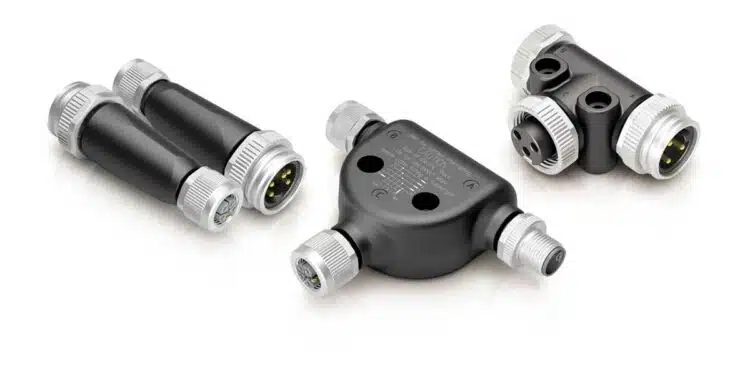M12 compact connector are increasingly used in smaller machines – 7/8” connectors remain essential for existing systems. binder expands its M12 connector portfolio to meet miniaturization, modern and legacy automation needs.
M12 Connectors: The Future of Compact and Powerful Solutions
In response to the trend towards decentralization and compact device designs, binder’s M12 connectors have become a standard for signal, data, and power transmission.
These connectors are renowned for their small size and robust performance, supporting voltages up to 630 V. Their standardized codings, including S, T, K, and L, ensure safe and precise solutions for a wide array of applications.
Ron Hautzinger, Product Manager at binder, highlights the versatility of M12 Power connectors, stating, “They are ideal for providing a stable power supply within the familiar M12 form factor, from AC motors and frequency converters to LED lighting and network devices.”
7/8-Inch Connectors: Reliability for Legacy Systems
While M12 solutions are gaining popularity in modern machines, 7/8” connectors remain essential in existing systems. Known for their robust construction, these connectors are ideal for high-voltage and high-power transmission. “In the USA, 7/8” connectors are still the standard, as the trend toward miniaturization is less pronounced there,” notes Hautzinger. binder’s 7/8” connectors offer proven reliability, making them the right choice for applications where larger components are appropriate.
Seamless Integration with New Accessories and Adapters
To facilitate the integration of modern and legacy technologies, binder has introduced an expanded range of accessories and interconnection solutions. New additions include a redesigned 7/8” T-splitter and a 5-pin T-splitter with L-coding, both designed to enhance network performance and power distribution. Additionally, two new adapter solutions enable intelligent connections between 7/8” and L-coded connectors, supporting the gradual modernization of existing systems.
Product Specifications:
- Series: 813, 814, 820, 823, 824, and 870
- Coding: K, L, S, T, and 7/8”
- Pins: 3 to 5, depending on coding
- Protection Class: IP67 or IP68
- Mechanical Durability: >100 mating cycles
- Operating Temperature Range: -40 °C to +85 °C
- UL Standards Compliance: UL2237 & UL2238
binder’s commitment to innovation and reliability ensures that automation professionals can respond flexibly to the needs of both modern and legacy infrastructure. All products are available immediately, providing customers with the tools they need to build efficient and secure systems.






























